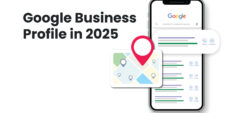Before we get to the topic of the best way of learning on-page SEO, it is crucial to know the actual importance of on-page SEO. On-page SEO is a necessity if you want a successful website, but what is it exactly?
If you want your website to be ranked high on a search engine, your website needs to be optimized, because the search engine will scan your website and determine if your website is worthy of the ranking. This is where on-page SEO comes in.
It presents the practice of website optimization that is done through the proper usage of keywords, titles, URLs, and images, but aside from the content, it is also concerned with the HTML source code of a website.
Optimizing your website is a very big project and learning how to do so can be difficult, so in this article, we will go through the best way of learning on-page SEO.
Before we dive into what makes on-page SEO, let’s take a look at how search engines work:
How Search Engines Work
Crawling
Crawling presents discovering and scanning a website. Search engine bots are always on the lookout for new websites and pages to scan. They scan the text, its content, keywords, images, and all the sections.

Indexing
After crawling, the search engine indexes a site, which means that it analyzes it and tries to understand what is on the page.
Picking the results
Many search engine algorithms are unknown, but there are still some ranking factors we know about. On-page SEO elements have a great impact on the ranking of a website.
Learning About On-page SEO elements
When we start learning about something new, it is of great help to get familiar with the basic terminology first.
In the case of learning on-page SEO, the first thing I did was read and take notes about its elements, the little puzzle pieces that are part of a large puzzle.
This, in my opinion, is the best way of learning on-page SEO.
The elements are divided into three categories: content, HTML, and site architecture elements.
Content
When we mention on-page SEO, the first thing that comes to mind is the content of the website, and coincidentally, it is also the most important factor.
There are always topics that are more relevant and searched for than others, and these are the topics are what should be your content and what you should be writing about. But this is not all.
If you want people to be able to find your content, you will have to use certain keywords that your audience is searching.

But finding those keywords is impossible if you don’t know your audience or your niche.
There are numerous tools on the internet that can help you find your niche and learn more about their interests, wants, and needs, such as Google Analytics and Facebook Business Page Insights.
They will give you information on age, gender, location, interests, and what they’re searching for.
How to use keywords
Once you learn what your audience wants, it is easy to select your keywords.
If your audience is searching for web design and how to learn it, web design is your keyword in this case, and you can also add words like ‘guide’ and ‘tips’, so they can find your article even easier.
It is advisable to use different keywords for different articles, attract more people to your website, and cover as much ground as possible.
Use the keywords sparingly; you don’t want to stuff your texts with them, because this is a technique that can get your website banned from a search engine.
Use them in the title, meta description, and a few times in the text, where they NATURALLY fit. It’s good to use them in headings, too, if possible.
Content includes product pages, blog posts, articles, guides, lists, infographics, videos, glossaries, slideshows, and directories.
But no matter the type, it is important that they are grammatically correct, the keywords are used accordingly, the readability is good and they’re understandable and make sense.
Additionally, search engines prefer longer content, over 1200 words. Also, don’t forget to format and use the right order and hierarchy.
HTML content
Title tags
Title tags are an HTML element and the title of a web page.
They are the ones that are displayed on the pages of search engines and on the top of web browsers once the page is clicked on.
If you link your page to social media, the title tag is what will be in the link. They should be 50-60 characters long (keep in mind that some characters take up more space than others because of their size) and are quite important because, through them, the search engine learns what the page is about.
Make sure that your title tag is accurate to what the text you’re writing and don’t forget to include your keyword.
This is important because if you keyword-stuff the title tag or Google deems it inaccurate, they can change it.
If you want to add your brand’s name, do it at the end of the title tag, after the name of the page. Also, avoid using all CAPS.
Meta description
A meta description is another HTML element, and what it does is provide a short description of the content of a page.
It is located underneath the title tag in search engine pages and is ideally 160 characters long max.
Just like the content and title pages, the meta description should include the focus keyword, but not too many times.
As of 2009, meta descriptions don’t affect website rankings on Google, however, they STILL MATTER. Why you may ask.
It’s because you want your customers to know what your page is about so they can decide whether they want to click it or not.
You want the meta description to be related to what they are searching for, so they can click your link and visit your website.
Search engines bold keywords in meta descriptions, which is very helpful and can attract the attention of customers, as well.

Header tags
According to data, people rarely read pages word by word, and the vast majority of them are just SCANNING the articles. This is where headers come in.
Header tags not only provide structure to your article but also inform readers about what each paragraph is about.
The H1 tag is the name of the article and the largest tag in size, while H2 and H3-H6 are smaller and present headings and subheadings.
It is highly advisable to include keywords in the header tags but to keep them short at the same time (70 characters max).
Header tags are useful for both SEO and readers. Search engines scan pages with headers more easily than the ones without them, and it makes it easier for people to read the content.
Image alt-text
Image alt-text is an HTML code that provides information about the appearance and function of an image on a webpage.
When writing the alt-text of an image, it is important to be as descriptive and specific as possible.
Make sure it’s coherent, as well. If there is an image of a person in front of a business building, don’t name it that.
Include the name of the business and the city it’s located in, as this makes it more specific.
If the image is of a cake, include the type of cake in the description, along with the toppings and even the color of the icing.
Make it shorter than 125 characters, and, as everything else related to SEO, don’t overstuff it with keywords.
Site architecture elements
URL
The URL of your page is usually the first thing people see.
As everything else related to SEO, they should include the focus keyword of your page.
Their purpose is to INFORM both the search engine and the readers what your page is about.
Additionally, when posting your links on social media, a good URL can tell the readers about your article, so a summary often isn’t even needed.
A good length is around 50-60 characters, and going over 80 can negatively impact your ranking.
Responsive web design
Responsive web design is one of the most important on-page SEO elements.
More and more people are using their phones to browse the internet, and as such, it is important that they can open and use your website on their devices.

Responsive web design uses HTML (Hypertext Markup Language) and CSS (Cascading Style Sheet) to ensure that websites work and have a good performance on all devices, including phones, tablets, desktops, and game consoles.
HTML and CSS elements together participate in making website layouts and elements scale accordingly to the device screen.
Furthermore, responsive web design matters because search engines prefer websites that have it, and it is also Google’s recommended design pattern.
Internal links
Internal links provide additional information to readers and have a significant contribution to ranking on search engines because some links can only be accessed this way.
A big advantage of internal links is that you can place them anywhere in the text and can use many, but too many can distract the reader and make it hard for the search engine to follow the page.
Page speed
If your page loads faster than the pages of your competitors, search engines will give you bonus points regarding your ranking.
There is a number of different services and websites that can determine the speed of your page, one of them is Google’s PageSpeed Insights.
You can increase the speed of your page by enabling compression, optimizing your code, reducing redirects, optimizing images and many more.
Learning through websites
After I got familiar with all of these terms and how they worked, I started looking up different websites that went more in-depth about these elements.
Websites like Mangools, Moz, Backlinko, and SEObook offer hundreds of articles and guides about SEO that are well structured and explained, so you will be able to follow them even if you’re a beginner.
Regarding YouTube channels, Neil Patel’s channel is probably one of the most useful ones out there (for beginners).
His videos are short and informative and offer solutions and tips to hundreds of questions related to how to make your website more successful.
Conclusion
On-page SEO is necessary if you want people to find your website. It consists of a number of different elements, that, if you learn what they are and how to use them, can help your website’s ranking significantly.
And now that you know all about them and how search engines work, it is time to pick up on-page SEO for your website.
If you think you know the best way of learning on-page SEO, leave a comment!





